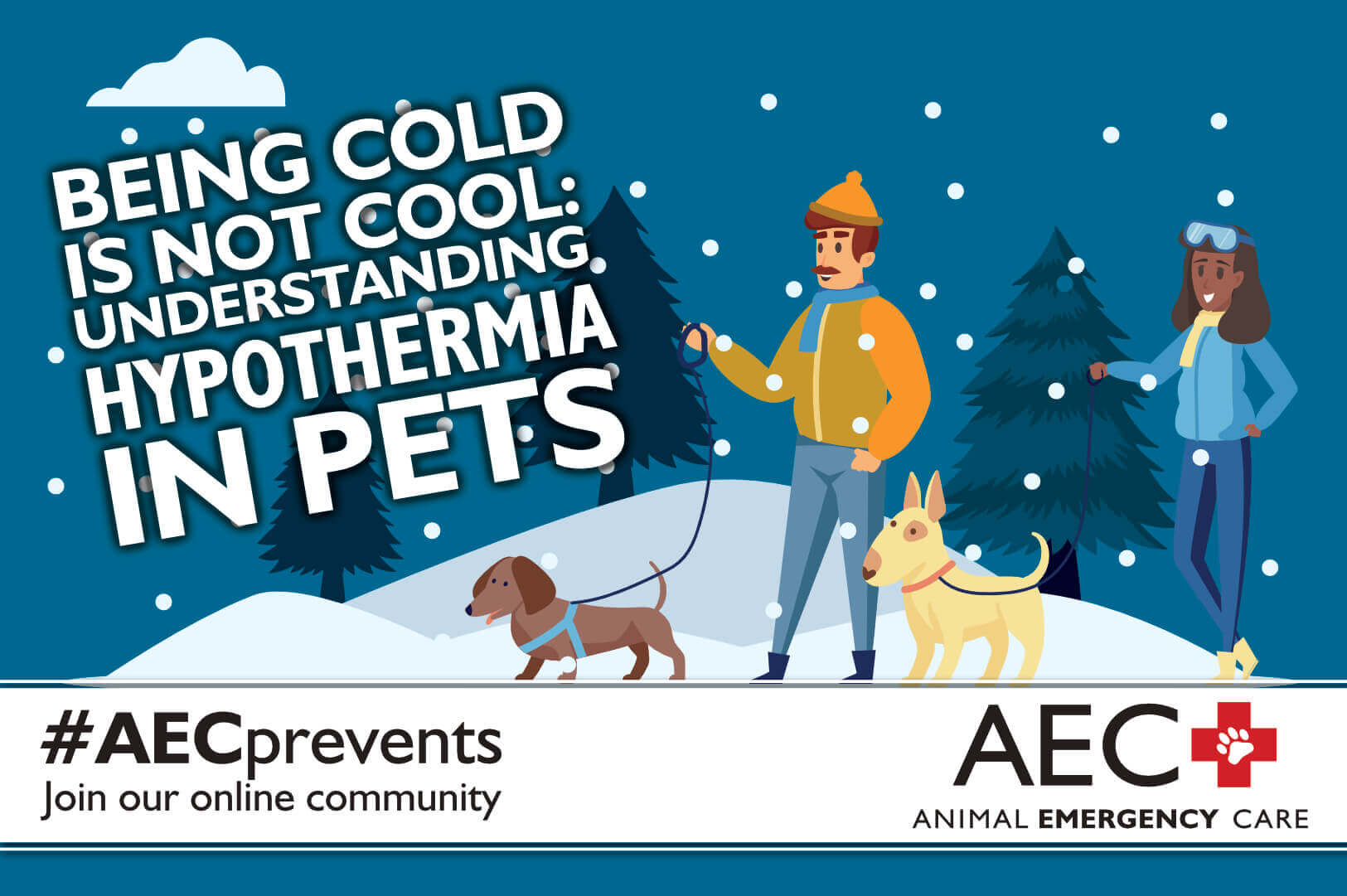Winter has arrived, and the chilly temperatures, freezing rain, and snow can make summer seem a lifetime away. Cozy sweaters, warm fires, and snowmen can bring joy to the winter months, especially when we include our four-legged family members. However, long-term exposure to cold can be dangerous for pets and lead to many health problems or death in severe cases. Ensure your pets stay warm this winter to avoid hypothermia and an unplanned emergency visit with our Animal Emergency Care team.
What is hypothermia in pets?
A healthy pet’s body temperature is normally much higher than a human’s, ranging from 100 to 102.5 degrees. Changes in your pet’s body temperature can cause hypothermia which is a medical condition that occurs when their body temperature drops below 100 degrees. Smaller pets and young and geriatric animals are at greater risk of developing this condition. Pets with chronic health problems, such kidney or heart disease, also have an increased risk of developing hypothermia. Exposure to frigid temperatures or freezing cold water are the most common causes of hypothermia in pets. Other causes include:
- Hypothyroidism
- Kidney disease
- Heart disease
- Low blood pressure
- Metabolic disease (i.e., hypoadrenocorticism, or Addison’s disease)
- Shock due to a traumatic event or injury
How will I know if my pet has hypothermia?
The quickest, most effective way to diagnose hypothermia is by measuring your pet’s rectal temperature using a standard digital thermometer. Depending on the underlying cause of your pet’s low body temperature, clinical signs may include:
- Shivering
- Lethargy
- Muscle stiffness
- Shallow or difficulty breathing
- Pale skin
- Muscle stiffness
- Low heart rate
- Dilated pupils
How is hypothermia in pets treated?
If your pet has clinical signs consistent with hypothermia or their body temperature has dropped below 100 degrees, bring them inside immediately and cover them with warm blankets or towels. Never wrap your pet in a heating pad or submerge them in hot or warm water to avoid injury or illness from warming them too quickly. Occasionally, mild hypothermia can be treated at home by checking your pet’s temperature every 10 minutes, and providing warm blankets until their body temperature reaches 100 degrees. However, bring them to your family veterinarian or Animal Emergency Clinic immediately if your pet is showing signs of severe hypothermia or has not improved after 30 minutes of home-warming treatment. The veterinarian who takes over your pet’s care will provide various treatments to safely raise their body temperature that may include:
- Warm intravenous (IV) fluids
- Lining their kennel or crate with pads that circulate warm water
- Wrapping them in special blankets that safely circulate warm air
- Warm oxygen therapy
- Warm water bottles placed around their body
- Heart monitoring with an electrocardiogram (EKG)
- Respiratory monitoring and observation
- Regular temperature monitoring
- Blood work to determine underlying medical causes and check for organ damage
Treatment methods for your pet with hypothermia will ultimately depend on symptom severity or whether your pet has any underlying medical condition. Some pets may need a combination of treatments to ensure a successful outcome.
Financial planning for pets needing costly treatment
Severe hypothermia cases may require hospitalization for several days or weeks as well as numerous follow-up progress checks. Such long-term veterinary care can be costly and stressful for pet parents but, fortunately, pet health insurance can ensure you can cover the cost of your pet’s emergency care for an unexpected condition like hypothermia. Most pet insurance providers offer policies that include reimbursement for accidents or illness requiring emergency veterinary care. Some providers, such asTrupanion, will pay your veterinary clinic directly, which eliminates the need to submit paperwork and wait for reimbursements.
Alternate payment methods can also decrease the worry about large veterinary bills by allowing payments to be spread out over longer periods. These payment methods include:
- CareCredit — This credit card can be used specifically for veterinary and human medical services, allows pet owners to spread out payments, and delays interest for a certain time period. Most veterinary facilities offer six months without interest for treatment that costs more than$200.
- Scratch Pay — This service provides fast, flexible payment options with variable interest rates depending on an individual’s credit. Scratch Pay can only be used at one veterinary facility at a time, although pet parents can re-apply to use this service at multiple locations.
- Short-term loans — These loans typically have high interest rates, making them less than ideal, but they are available as a last resort.
How can hypothermia in pets be prevented?
Ensure your pet does not have prolonged exposure to extremely cold temperatures during the cold winter months. Generally, it is too cold for your pet if it is too cold outside for you. Consider a coat and protective boots to help them stay warm and avoid hypothermia if your pet does need to go outside briefly. Additionally, ensure your pet’s fur is dry before going outside to prevent their body temperature from dropping quickly and keep them away from bodies of water.
Call or visit your family veterinarian if you suspect mild hypothermia in your pet. However, contact our team at Animal Emergency Care and bring in your pet for immediate treatment if your pet is showing severe signs. #AECprevents


